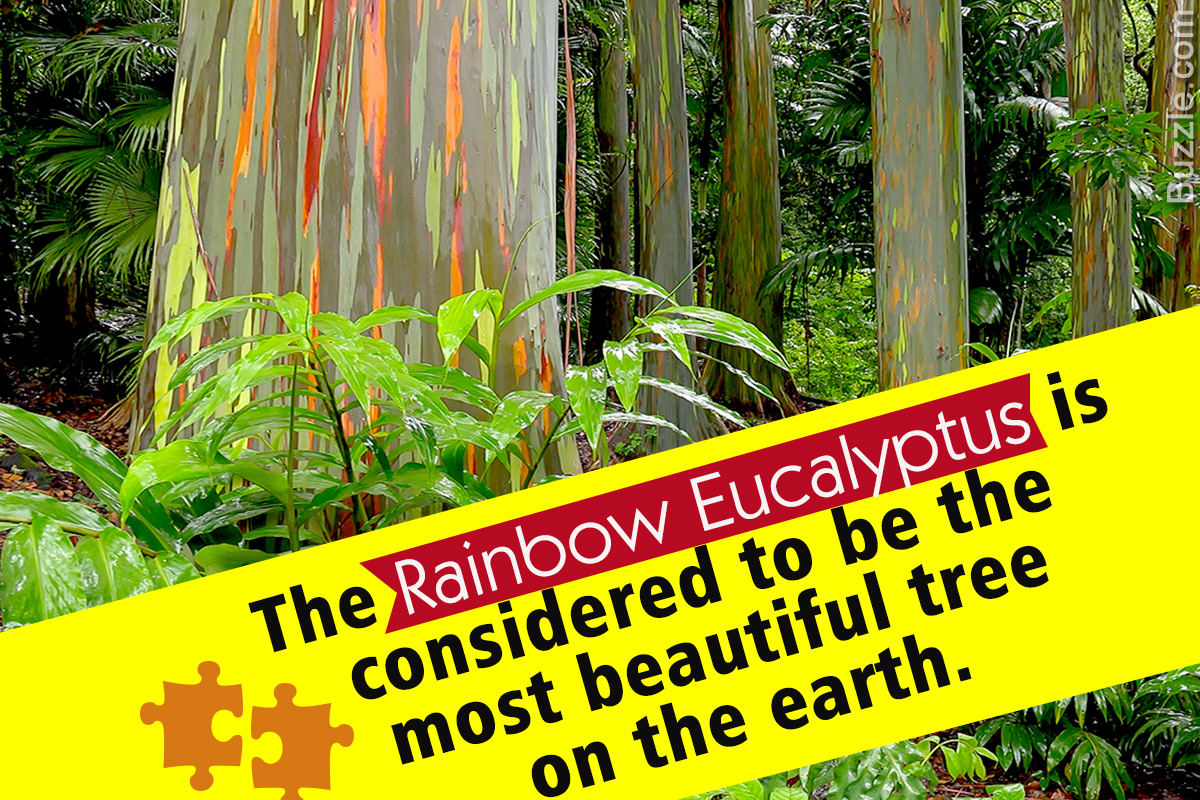
With its multicolored bark, the rainbow eucalyptus is a delight to witness. What gives this tree its unique characteristic and several other facts about the same will be highlighted here.
Well done, nature. Well done.
Even though the tree is most famous for its rainbow-hued trunk, it is also recorded to be one of the fastest growing trees in the world.
Of the many wonders that nature has to offer, the rainbow eucalyptus (Eucalyptus deglupta) has got to take one of the top spots. Revealing a bark marked by multicolored hues of the rainbow, the rainbow eucalyptus, as it is rightly called, prompts and demands a reaction that can only be described as one of awe and pure, unadulterated amazement. The bark is reminiscent of an artist’s painting, like the brilliant strokes of paint splashed liberally across the canvas, the bark glistens in the seven-hued rainbow colors.
While fixating on the colors is pretty natural, there are several other factors that make the rainbow eucalyptus a very interesting gift of nature. In this following Gardenerdy article, we will let you in on some of the most interesting facts about this tree.
Rainbow Eucalyptus Facts
Physical Characteristics
This eucalyptus tree, belongs to the Myrtaceae family and is also known as the Mindanao gum, or rainbow gum. It is a large, fast-growing, evergreen tree, with broad leaves that has a life span of 50-150 years.
It is one of the fastest growing trees (one specimen reached a height of 32 feet in just about 18 months) growing at over 3 feet per year. The rainbow eucalyptus can easily achieve a height of over 250 feet in its natural habitat. The trunk, also quite large, can grow up to a diameter of 6 feet. However, when growing outside its natural habitat, the tree will only achieve a height of 100-125 feet.
The rainbow eucalyptus has tapering leaves that are over 6 inches long and 4 inches wide. When crushed, the leaves give off a mild, aromatic after smell. The tree also has small white flowers which bloom at different times during the year, depending on the location. The flowering begins only after a few years of germination. The flowers are pollinated by bees and are full of nectar, making them a good source of honey.
The Growing Zones
Interestingly, this is the only variety of eucalyptus tree that is indigenous to the northern hemisphere. It typically grows in regions that are moist and humid, like tropical forested areas which receive heavy rainfall. It is naturally distributed in the forests of Indonesia, the Philippine Islands, Papua New Guinea, and other places in Southeast Asia. However, in more recent times, the tree has been introduced in regions of Southern California, South Florida, and Hawaii as well.
The rainbow eucalyptus cannot survive in hot and dry weather or in conditions of frost.
The Rainbow-colored Bark
What is most intriguing about the tree is its trunk. The bark is light brown in color until it begins to shed its layers―once the bark begins to shed (which happens during the summer), it reveals a light green color underneath. Overtime, the light shade turns into a dark green color which runs into shades of blue, pink, red, purple, orange and every other color of the rainbow. As layer upon layer is shed, a new color is revealed. Once this process is complete, the bark takes over its original brown color all over again and the process begins afresh. However, it has been observed that the bark is less colorful when grown outside tropical areas.
Soil and Climatic Conditions
The tree requires heavy sunlight for optimum growth. The soil conditions need to be moderately wet and sandy or loamy, along with being highly alkaline or mildly acidic. Every individual tree also requires a lot of space to grow to its optimum width and height.
The Many Uses
► In areas where the tree grows naturally, the rainbow eucalyptus is mainly used for its wood―as construction lumber or plywood, for making cabinets, boats, and particleboard, and joinery. However, great care needs to be taken when using the wood for making furniture; the wood needs to be dried properly so that it does not crack.
► The wood is commonly used in paper making as well. Although, as many people would like to believe, the end product is white like any regular paper and does not take on a rainbow hue.
► The tree also serves an ornamental purpose, largely due to its multicolored bark, and is commonly used in landscape designs.
► In many places, the eucalyptus is planted for the shade that it provides. It is usually planted alongside wide roads.
► In the swampy areas of Africa, the tree was planted such that it would soak up the excess water and prevent the breeding of mosquitoes, thus preventing malaria.
Diseases and Other Problems
► The rainbow eucalyptus is entirely intolerant of frost and cannot thrive in cold climates.
► If marsh-like conditions are prolonged, the water can lead to root rot.
► Termites and beetle borers can cause a lot of harm to the tree, especially young plants.
The rainbow eucalyptus is a pure delight for any nature-lover, no doubt; however, if you really want to experience this marvel the way nature intended you to, you should plan a trip to one of the places where it is naturally found.


